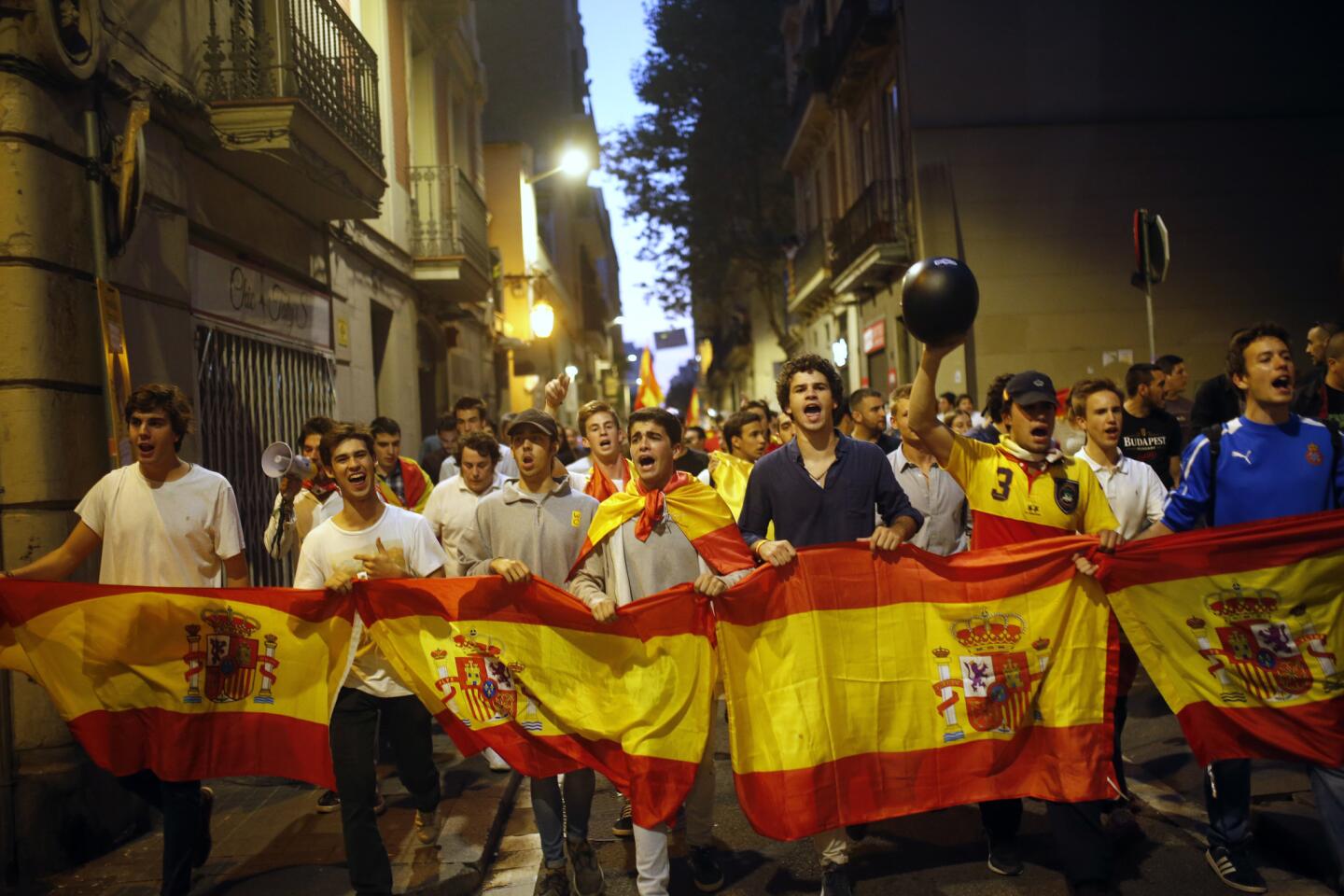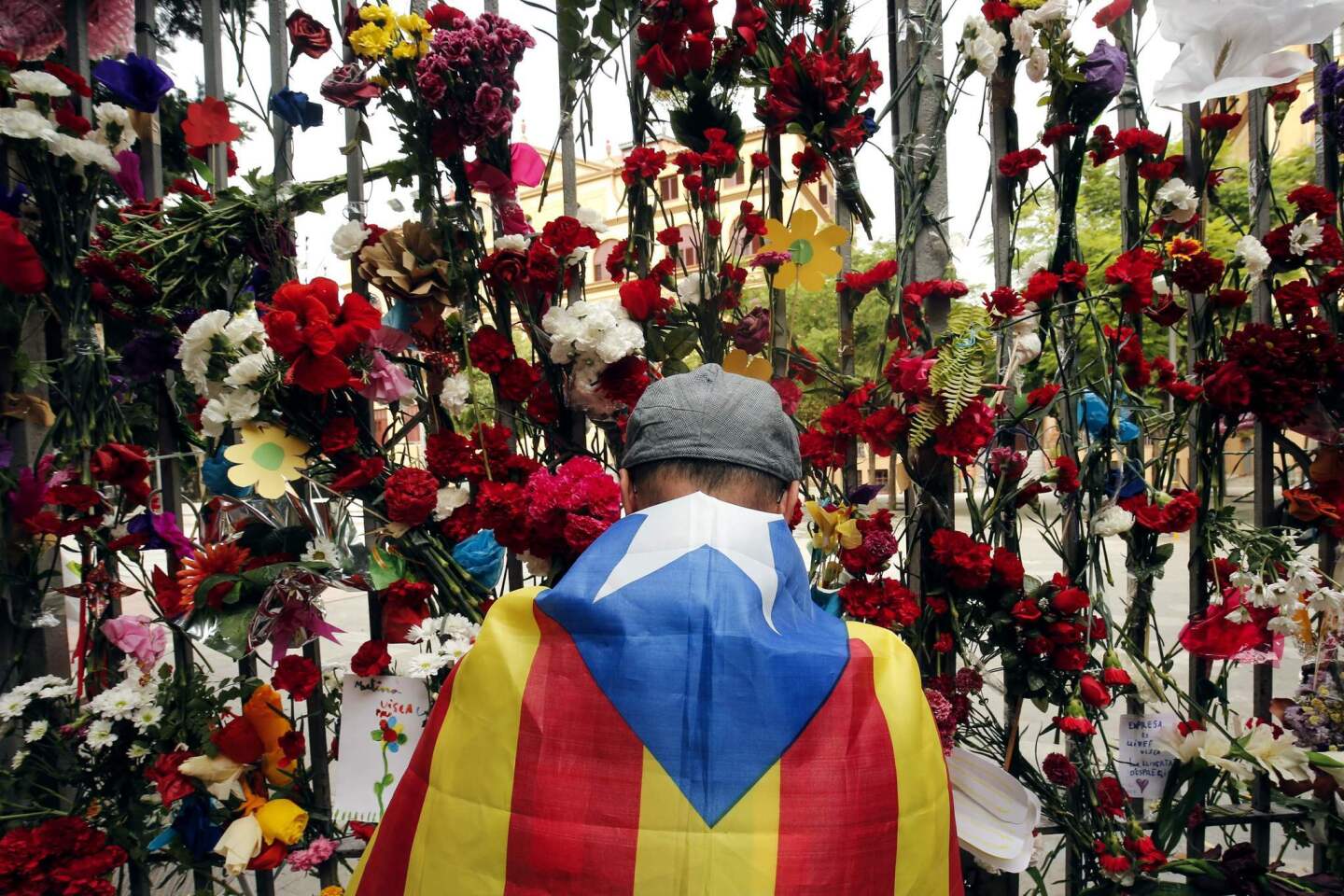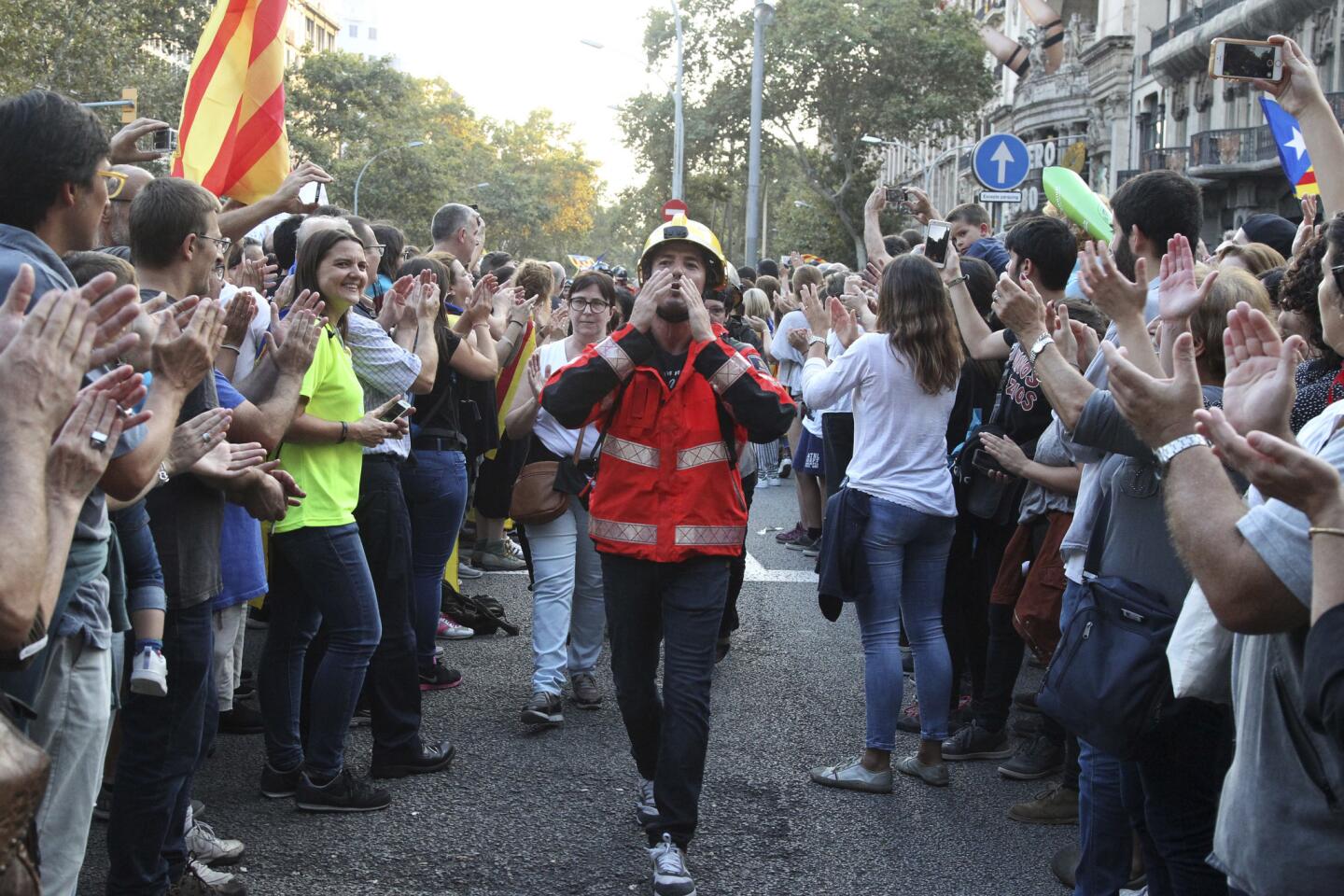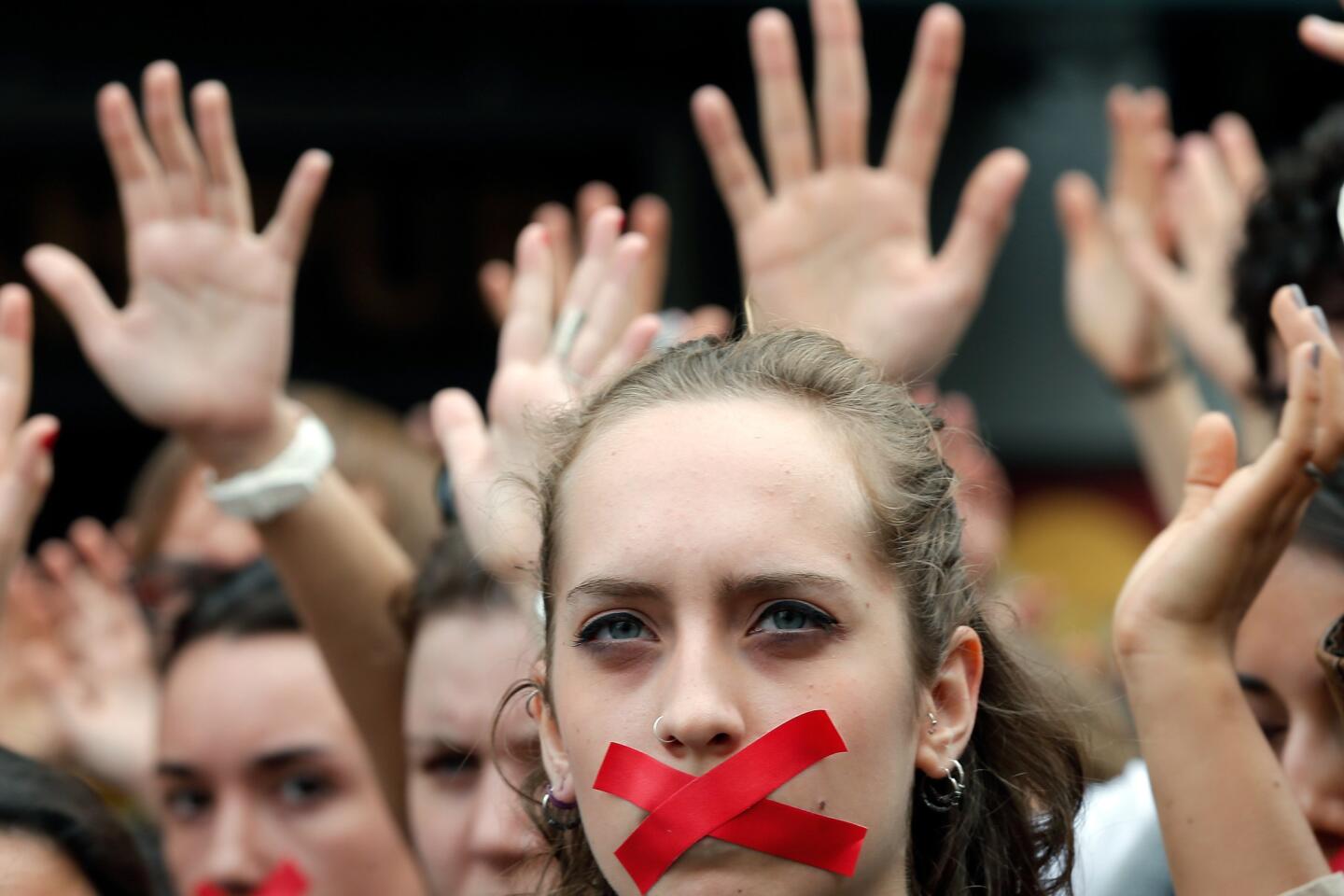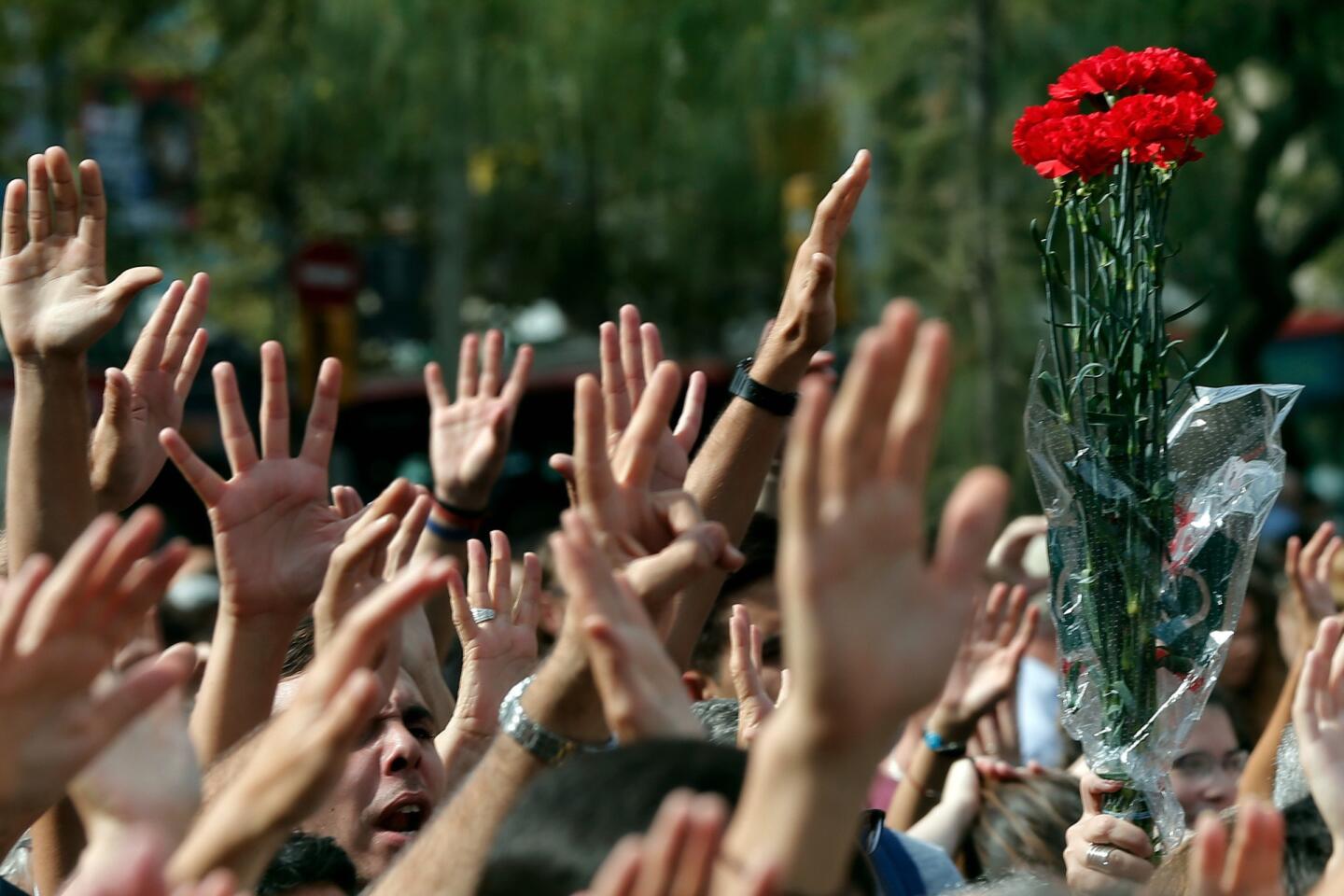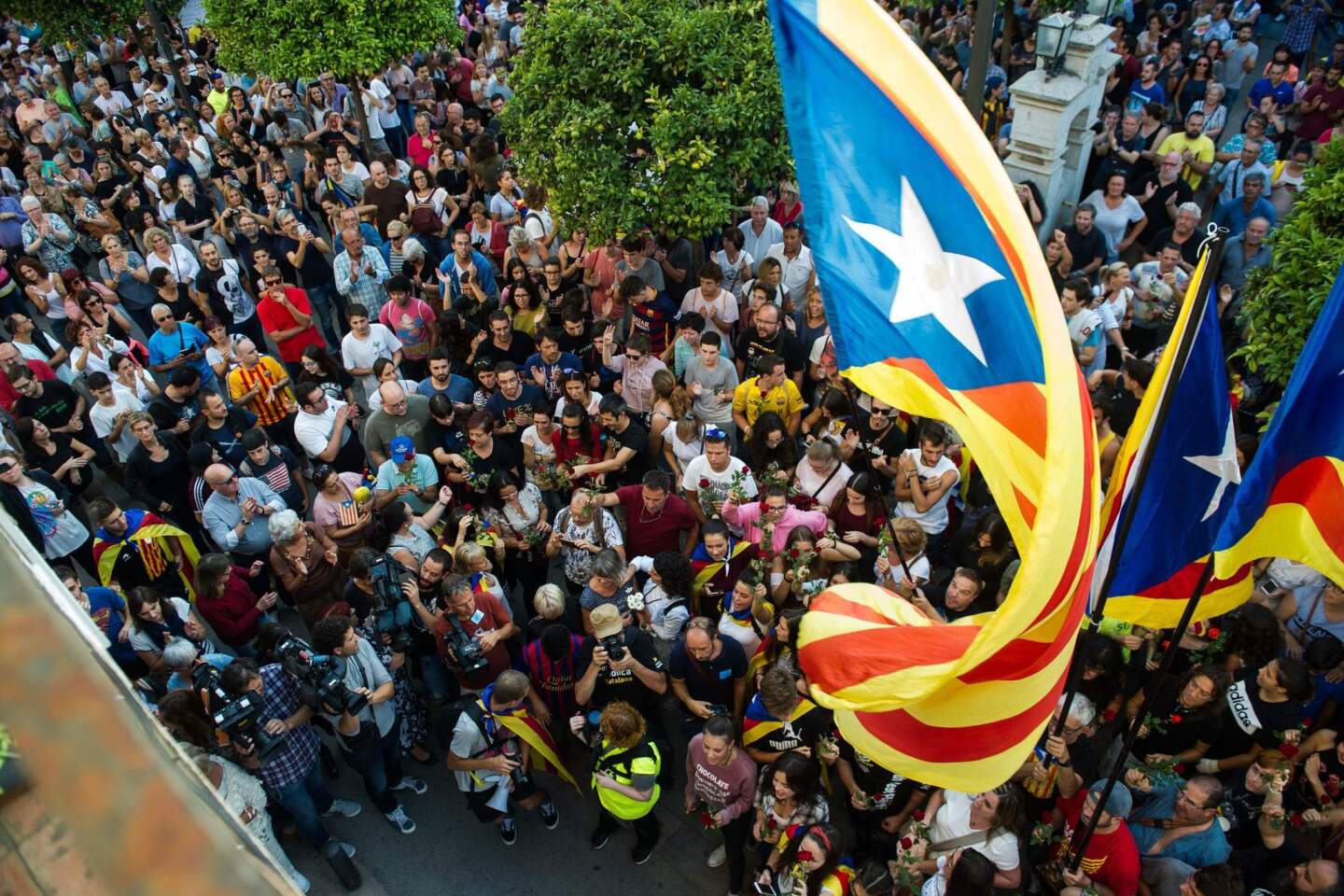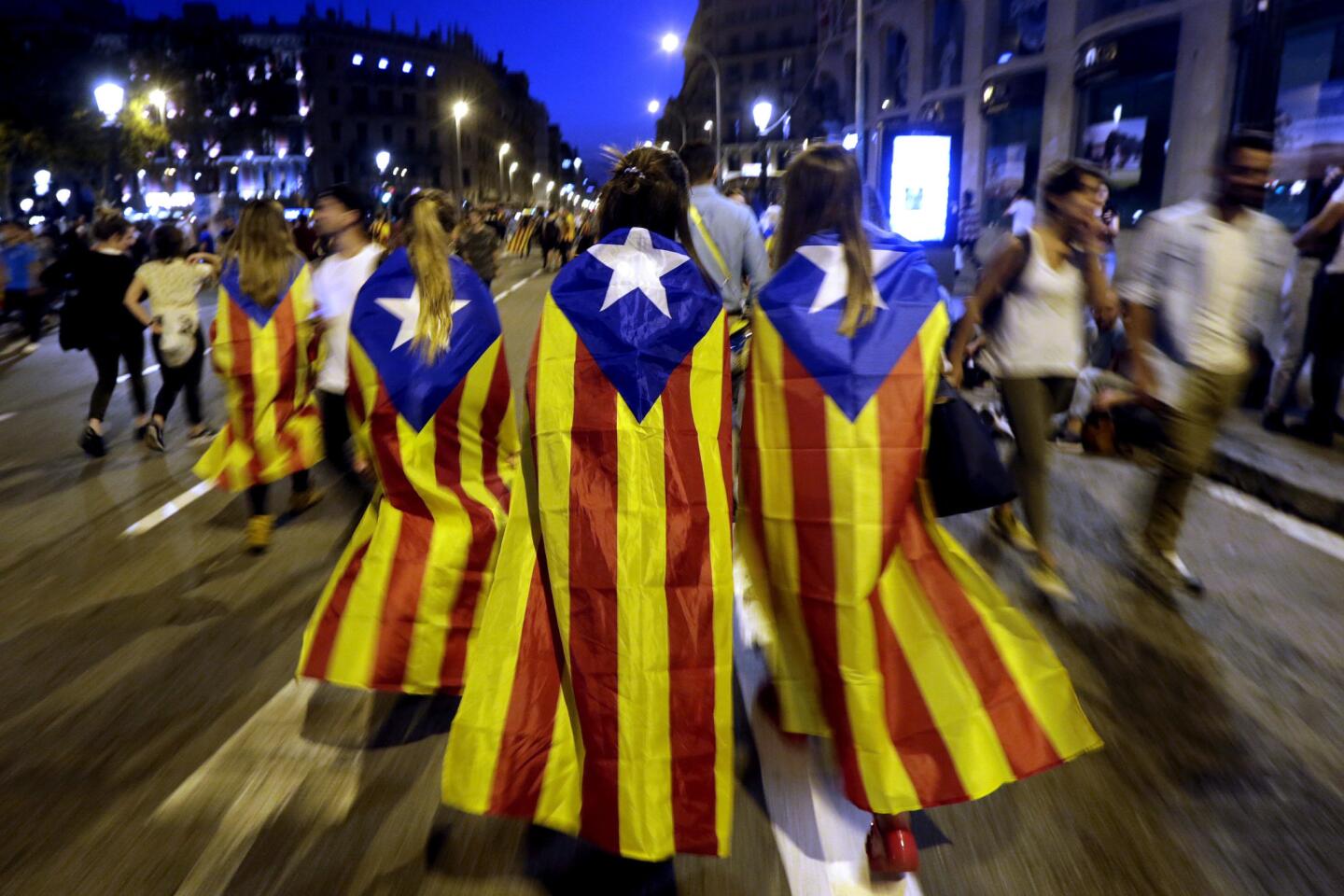With independence crisis brewing, what’s next for Spain’s Catalonia region?
- Share via
Reporting from Washington — It might seem like a sudden crisis, but it has been brewing for decades — if not centuries.
Breakaway sentiment in Spain’s northeastern region of Catalonia, an area that remains fiercely proud of its own language and culture, threatens to rip the national fabric of a modern European democracy, with repercussions that would be felt across the continent and beyond.
Regional Catalan leaders are saying they could declare independence within days, while the Spanish central government in Madrid is weighing drastic measures to head off such a move, even raising the specter of martial law.
With an already ugly confrontation escalating fast, here are some things to know about Catalonia, a storied enclave most familiar to the outside world for its prizewinning gastronomy, its tragic Spanish Civil War history, the vibrant tourist destination of Barcelona — and a recent terrorist attack unrelated to the independence crisis.
Where is Catalonia?
It lies at the northeastern tip of the Iberian Peninsula, with its four Spanish provinces forming a rough triangle. The rugged Pyrenees mountain range separates it from France and Andorra to the north. It is bordered by the Mediterranean Sea to the east, and the Spanish regions of Valencia in the south and Aragon to the west.
What language is spoken?
Officially, two of them: Spanish, the national tongue, and Catalan, which many of its 7.5 million people speak at home and among themselves, especially in the hinterlands outside of the regional capital, Barcelona, and other big cities. The language is not a Spanish dialect; it is closer to French and Italian, growing out of the “common speech” form of Latin spoken by Roman colonizers. In the Catalan language, the region is known as Catalunya.
How long has Catalonia been part of Spain?
For quite some time, even while seemingly considering itself a place apart. It coalesced as a distinct region in the 11th century, later teaming up with the neighboring kingdom of Aragon as a medieval seagoing power. Then, in the 15th century, a royal marriage between King Ferdinand II of Aragon and Queen Isabella of Castile joined their realms. Catalonia became an “autonomous community” of the modern Spanish state, which was declared in 1931, although recent years have shown that autonomy has definite limits.
How’s the economy?
Humming along — and that’s actually part of the problem. Catalonia is one of Spain’s wealthiest regions, with strong manufacturing and tourism sectors. Thus, the central government in Madrid has an unvarnished interest in making sure Catalonia’s economy stays tightly interlocked with the country as a whole. In Catalonia, there’s resentment over a sense that the region effectively subsidizes less affluent parts of the country; one secessionist rallying cry is “Madrid nos roba” — “Madrid robs us.” But Catalonia also has a heavy public debt, most of it owed to the central Spanish government.
The region’s sheen of affluence is in large measure due to its commercial hub of Barcelona — beloved of tourists the world over, harshly spotlighted by an Islamist-motivated terrorist strike on its famed Ramblas boulevard in August that killed at least 13 people. It is one of Europe’s sleekest and most sophisticated cities, literary and cosmopolitan, sprinkled with architectural landmarks.
What’s the appeal of independence?
It’s partly emotional, partly political — and heavily shadowed by modern history. Barcelona was a bloody battleground in the Fascist takeover of the Spanish Republic in the 1930s, harrowingly chronicled in George Orwell’s memoir “Homage to Catalonia.” The city’s fall in 1939 ushered in the dictatorial rule of Francisco Franco, and while suffering due to his oppression was widespread, Catalan nationalism was a particular target of the “generalissimo.”
After Franco’s death in 1975, Catalonia enthusiastically supported Spain’s new democratic constitution recognizing its autonomy and its language, which began to enjoy a revival.
The notion of secession gained traction when a 2010 decision by the Spanish constitutional court threw out or revised some important provisions of an autonomy statute that addressed issues such as language and taxation. The court’s ruling, intended to keep Catalonia closely in the Spanish fold, may have had the opposite effect, fueling separatist sentiment among those angered by the sense that autonomy was diminishing.
What set off the current crisis?
The immediate spark was Catalonia’s independence referendum, held Oct. 1 in defiance of central government warnings that the vote was illegal and illegitimate. Images of Spanish police beating and dragging away would-be voters and raiding polling places raised concerns across Europe and around the world; some 900 people were reported hurt.
Regional officials say the referendum won the approval of 90% of the voters, but acknowledge that turnout was low, with most voters staying away, and some electoral benchmarks, such as an accurate census of those eligible to cast ballots, were absent. Officials said nearly 2.3 million ballots were cast, out of 5.3 million registered voters.
What now?
It’s an extremely volatile situation. If Catalan leaders defy the Spanish state in coming days and proclaim independence, Article 155 of the Spanish constitution gives the central government the authority to take over the region administratively. In theory, that could involve drastic measures such as declaring a state of emergency or martial law, stripping regional politicians of power, shutting down Catalan broadcasters and suspending the autonomous police force.
The crisis has only deepened over the past week. After the referendum, Spain’s King Felipe VI took the rare step of addressing the nation Tuesday night to decry what he called the “disloyalty” of Catalan leaders. The next day, Spanish Prime Minister Mariano Rajoy insisted his government would not yield to “blackmail” from the separatists, even as Catalan leaders urged mediation efforts. On Thursday, Spain’s constitutional court blocked a special session of Catalonia’s parliament scheduled Monday, during which regional leaders were expected to declare independence. It remained unclear whether the session would be held anyway. And polarization is on clear display: On Sunday, some 350,000 people attended a Barcelona rally against independence, the largest such gathering to date. “Catalonia is Spain,” some banners read.
What about the longer term?
A “Catalexit” would be a complex matter. Catalonia has some trappings of statehood, such as its parliament, flag and police force. But the Spanish state controls many essential government functions and institutions, including defense, the central bank, national taxation, customs and border formalities, even air traffic control. Unraveling those could prove painful and protracted for both sides.
Also, there would be Catalonia’s external relations to consider. The 28-nation European Union generally doesn’t like to back secessionist movements or interfere in member states’ domestic affairs. It has appealed to both sides to talk out their differences, and expressed worries about the violence that has occurred. At the same time, though, Brussels has made clear that a Catalonia striking out on its own would not automatically be recognized by other European governments, or granted EU membership.
Twitter: @laurakingLAT
ALSO
Spain’s king says Catalonia leaders pushing independence show ‘inadmissable disloyalty’
EU and Spain turn down Catalonia’s plea for mediation after independence vote
Amid scenes of chaos and violence, Catalonia independence vote is projected to pass overwhelmingly
UPDATES:
2:35 p.m., Oct. 8: This article was updated with anti-secession protest in Barcelona.
12:15 p.m., Oct. 5: This article was updated with Spain’s constitutional court ordering a suspension of Catalonia’s parliamentary session planned Monday.
This article was originally published Oct 5 at 3 a.m.
More to Read
Sign up for Essential California
The most important California stories and recommendations in your inbox every morning.
You may occasionally receive promotional content from the Los Angeles Times.

